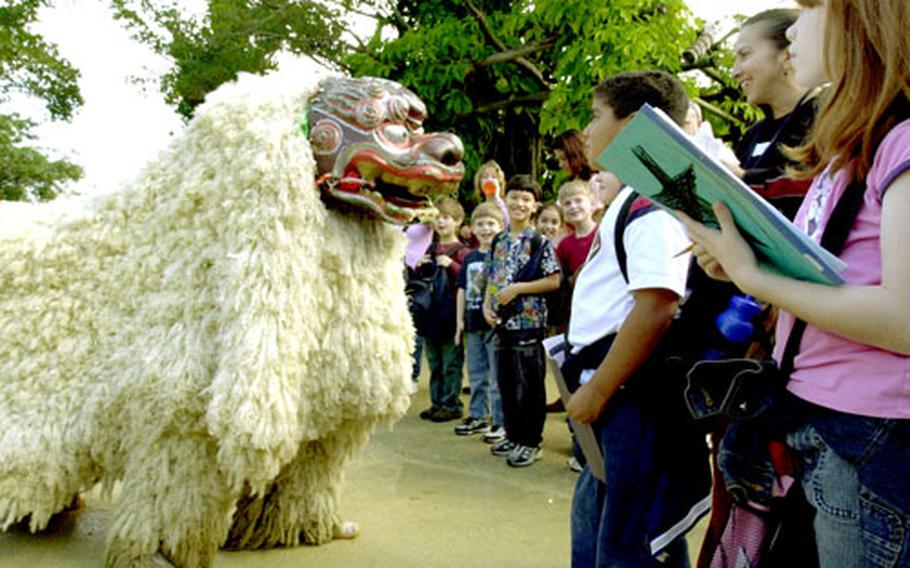
Students from Camp Foster’s E.C. Killin Elementary School are all smiles as performers at Ryukyu Mura demonstrate a shisa dog dance. All multi-age classes from the school went to the reproduction of a traditional Okinawan village on Thursday to learn about the culture of the Okinawan people. (Fred Zimmerman / Stars and Stripes)
ONNA VILLAGE, Okinawa — Students from a Camp Foster elementary school took a step back in time last week as they visited a village that highlights Okinawa’s heritage and time-honored traditions.
The multi-age classes from E.C. Killin Elementary School took the field trip Thursday to Ryukyu Mura, a village that replicates the old Okinawan lifestyle. About 100 students, teachers and parent chaperones made the trip.
The village shows the much slower, simpler life once lived on Okinawa. Numerous red-tile roofed homes were on display for students to see, as well as crafters and musicians demonstrating their skills. Students also saw numerous traditional Okinawan dances.
While at the village, students had to complete Okinawa-themed study guides that included a word find and word scramble. They also were required to draw pictures of their favorite village house, piece of pottery and part of one of the shows, describing why they liked it. Students were asked to list one thing they learned about the village.
“I learned how Okinawans dressed a long time ago,” said 8-year-old Caleb Warne, a second-grader. “It was pretty fun … we got to do a lot and see a lot of stuff like the water buffalo, shisa dogs, habu snakes and a mongoose. The shisa dog dance was one of my favorites because it was funny.”
Multi-age teacher Jessica Asher said she planned to discuss the trip and study guides with her students Friday and since they’ve also been learning about poetry, she was going to have students write poems about their experience.
The trip was planned to coincide with the multi-age classes — rooms mixed with first-, second- and third-graders — beginning to learn about the Okinawan people.
“Multi-age started a unit on multi-cultural studies, so this was our kick-off,” Asher said. “It’s important for them to know about where we are. Like they say, we’re all ambassadors to our host country, so it’s important for us to learn about where we live.”